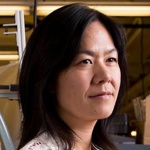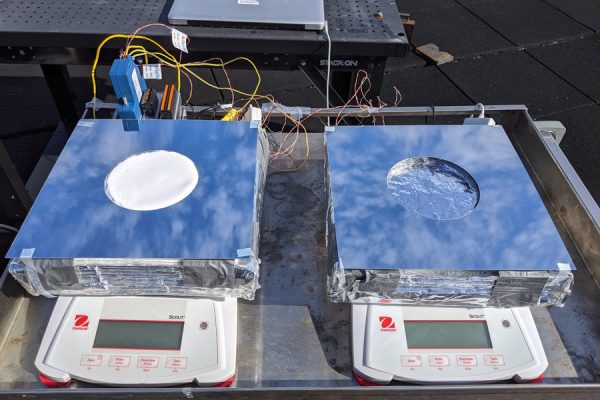Our Research Hybrid evaporative and radiative cooling as a passive low-cost high-performance solution for food shelf-life extension
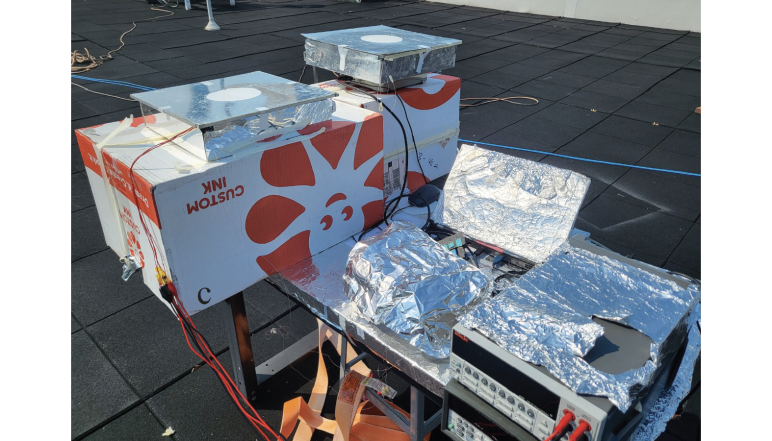
A photograph of an experimental setup for an outdoor cooling experiment on the rooftop of MIT's Building 1
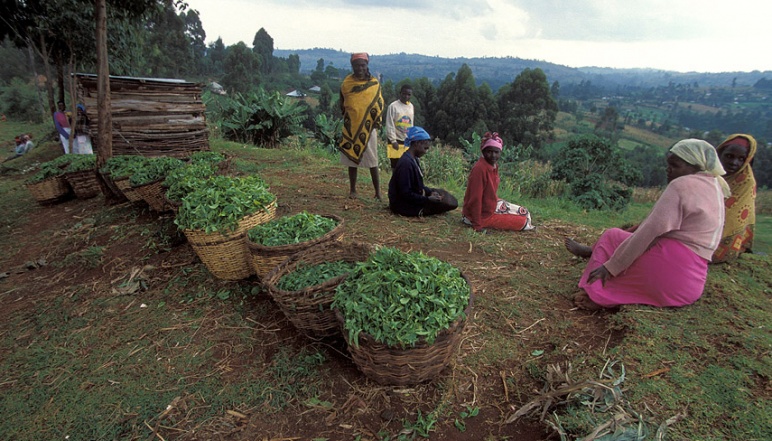
Image Credit: Women take a break after harvesting crop by Curt Carnemark / World Bank is licensed under CC BY-NC-ND 2.0
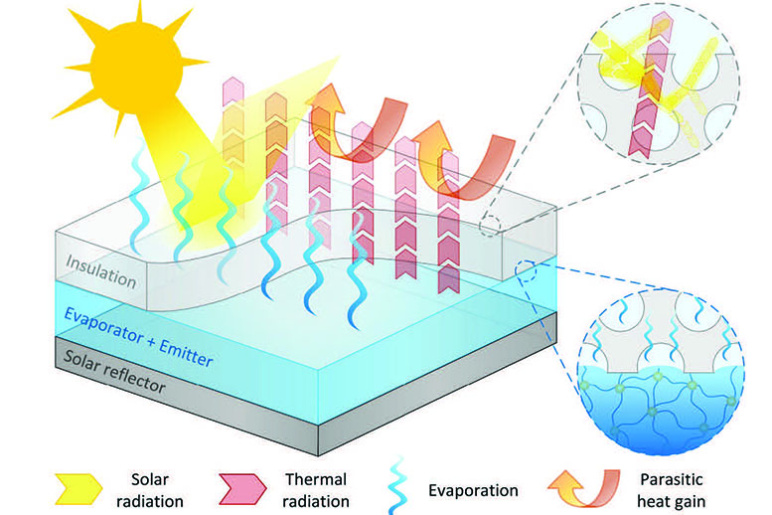
A hybrid evaporative and radiative cooling architecture. The cooling structure consists of a solar reflector, a water-rich and IR-emitting evaporative layer, and a vapor-permeable, IR-transparent, and solar-reflecting insulation layer
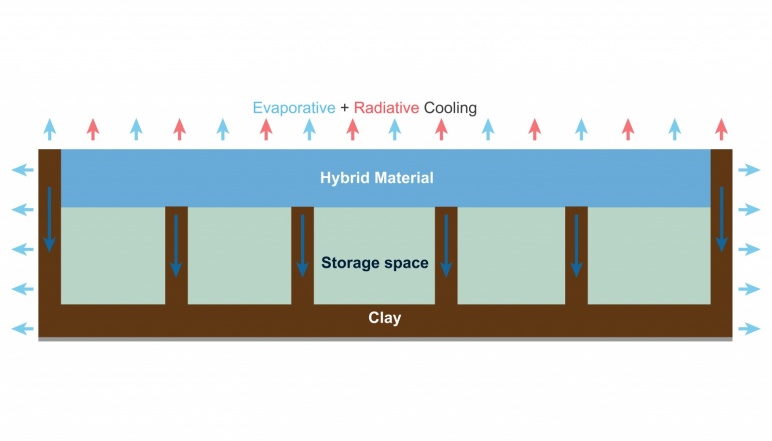
Design of a farm-scale hybrid cooling unit made of low-cost materials. Image Credit: Zhengmao Lu
Principal Investigators
Jeffrey C. Grossman
- Morton and Claire Goulder and Family in Environmental Systems
- Professor of Materials Science and Engineering
- Head of the Department of Materials Science and Engineering
- Department of Materials Science and Engineering
Evelyn Wang
- Gail E. Kendall Professor
- Department Head
- Department of Mechanical Engineering
Gang Chen
- Carl Richard Soderberg Professor of Power Engineering
- Director, Pappalardo Micro and Nano Engineering Laboratories
- Director, DOE EFRC: Solid-State Solar-Thermal Energy Conversion Center (S3TEC)
- Department of Mechanical Engineering
Challenge:
How can we provide low-cost off-grid temperature regulation for post-harvest food preservation under different climate conditions?
Research Strategy
- Passively regulate temperature of past-harvest food with both evaporation and thermal radiation without electricity
- Use low-cost and locally available materials in rural areas to design the passive cooling unit that provides high cooling performance under various climate conditions
Project description
Food loss and waste account for nearly a third of all food produced in the world, presenting grand societal, economic, and environmental challenges for the 21st century. In developing countries where food security is still a great concern, food loss can largely be attributed to a lack of proper temperature regulation of post-harvest food. Passive cooling storage of post-harvest food without electricity could be particularly attractive to reduce food insecurity and promote economic development. Previous passive cooling solutions such as evaporative cooling or radiative cooling either do not function well under the sun or can only reach low temperatures at locations of very high altitudes and low relative humidity. Here, to enable wider adoption of passive cooling, we propose to build a low-cost high-performance hybrid-cooling food storage unit with its temperature regulated by simultaneous evaporation and thermal radiation. Our new cooling architecture, which will be made from cheap and fully scalable materials, is solar-reflecting, IR-emitting, evaporative, and thermal insulating. Our heat and mass transfer model shows that the hybrid cooling unit significantly outperforms previous passive technologies. It reaches lower stagnation temperatures with much less water consumption compared to conventional evaporative cooling. It drastically increases the cooling power and performs well under a much wider range of climate conditions compared to radiative cooling. In locations with RH < 50%, our storage unit can at least double the food shelf-life. Once developed, we hope to disseminate the technology in rural communities and partner with global institutes, labs and foundations to maximize our reach and impact. Postdoctoral associate Zhengmao Lu and graduate student Arny Leroy will work together on this project.
Outcomes
- Built devices based out of three different porous polymer covers (PPC) and performed measurements on the roof-top of MIT where a pure evaporation system was placed alongside the hybrid cooling structure
- Developed a heat and mass transfer model and leveraged the model to study the influence of PPC optical properties on cooling performance. Results suggest better-performing PPC should have solar reflectance greater than 0.8 to realize improved cooling performance
- Discovered that optimizing air gap thickness in hybrid-cooled food storage generates additional cooling power at colder temperatures
- Compared the shelf-life of red tomatoes stored in hybrid-cooled food storage for four different designs—insulated side wall, uninsulated side wall, uninsulated solar-reflective side wall, uninsulated side wall with evaporation, and uninsulated solar-reflective side wall with evaporation. Calculations estimate up to 500% improvement of food shelf-life with the insulated solar-reflective wall combined with evaporation while the worst-case scenario is still expected to provide 200% improvement depending on the food thermal mass
Publications
Significantly enhanced sub-ambient passive cooling enabled by evaporation, radiation, and insulation
Zhengmao Lu, Arny Leroy, Lenan Zhang, Jatin Patil, Evelyn Wang, and Jeffrey Grossman, Cell Reports Physical Science, 2022
News
Additional Details
Impact Areas
- Food
Research Themes
- Transforming Food Systems
- Equity & Access
Year Funded
- 2021
Grant Type
- Seed Grant
Status
- Completed


